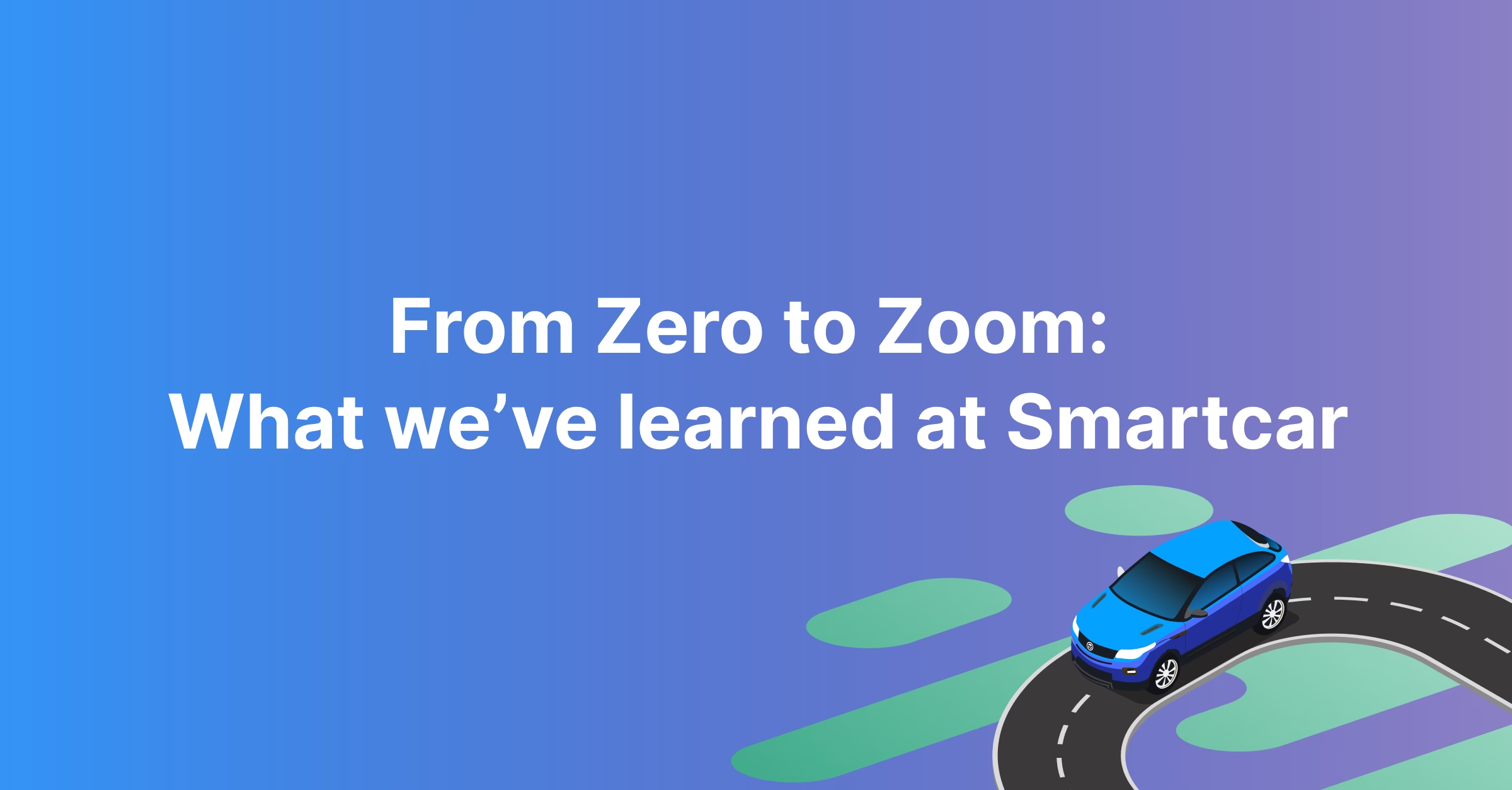Bumper uses Smartcar's car API to turn real-time vehicle data into proactive maintenance alerts so you can get your car fixed before it breaks.
The Bumper team is building a new experience for buying, selling, and monitoring used vehicles. Their goal? Lowering the cost of owning a car.
Its vehicle history reports help buyers access information that signals a higher risk of unforeseen problems and may influence a purchase decision — like if a vehicle has been in an accident, stolen, or salvaged.
Bumper also uses real-time vehicle telematics to alert users when their vehicle needs service. By using Smartcar’s API to onboard and integrate with vehicles, they’re able to build in-depth vehicle dashboards and personalized notifications for drivers without installing any after-market hardware.
The cost of vehicle ownership is at a record high
It’s never been more expensive to be a vehicle owner. The average cost of a vehicle in the US is over $10,000 annually, with monthly payments for new vehicles hitting an all-time high this year.
Used vehicles aren't giving buyers the financial relief they’re looking for either.
Bumper is on a mission to help vehicle owners spend less money on unexpected maintenance, especially timely, given that the price of car parts has increased by almost 15% this year alone.
They’re doing this with a vehicle data dashboard that helps users stay on top of maintenance schedules, avoid costly breakdowns, and preserve the value of a vehicle.
More importantly, Bumper delivers maintenance information how users want it — with personalization and proactiveness.
A survey by PEGA found that 65% of vehicle owners want to be alerted when it’s time to schedule a service. This is an area where automaker apps and services fall short of the standards many drivers want.
That’s where Bumper comes in.
“Our goal is to provide customers more precise predictions on when they might need to service their vehicles. We’re making this happen by using Smartcar to get a vehicle’s real-time mileage and predict its next tire, brake, and oil change.”
— Alessandro Mannino, Director of Product at
To give users the on-demand convenience they were looking for, Bumper needed a solution that could feed vehicle metrics to their dashboard without a long wait.
They evaluated using OBD-II dongles and concluded that waiting for a hardware device to install would be a poor user experience.
With hardware out of the picture, it was now a question of finding the right software solution. Bumper evaluated Smartcar against building their own vehicle integrations with OEMs. Ultimately, Bumper settled on Smartcar's API because it provided the most efficient implementation of integrations across a wide range of vehicle brands and models.
Security also played an important role in their decision-making process. On top of enterprise-grade certifications and continuous API monitoring, Smartcar’s platform comes with a pre-built OAuth 2.0 flow that works with all compatible brands.
What success looks like for Bumper 📈
With predictive maintenance as a core feature, Bumper wanted to see higher customer satisfaction rates for their Bumper Connect feature.
“By providing our users with accurate suggestions for when they need maintenance, we’re able to satisfy their needs as a car owner much longer,” said Alessandro Mannino, Director of Product at Bumper.
According to internal data, they’ve successfully delivered a user experience that motivates vehicle owners to continue leveraging proactive maintenance. They’ve seen this translate into a 19% retention rate among users that onboarded to Bumper via Smartcar Connect.
How the integration works
Using Smartcar’s API, Bumper can pull a vehicle’s attributes, odometer readings, fuel tank levels, and tire pressure. These metrics are displayed on the Bumper Connect dashboard for users to quickly review vehicle health metrics and stay on track with vehicle services.
Bumper retrieves vehicle data via Smartcar’s API frequently enough to become a reliable source of information for timely vehicle analysis and maintenance suggestions.
For example, they use odometer readings to curate a list of suggested actions to take at specific mileage points, like changing a car’s engine oil and checking tire rotation at ‘X’ amount of miles.
The onboarding process is simple. Once drivers sign up for a Bumper account, they’re ready to connect their car with three simple steps:
- Sign in to their connected services account
- Review the data permissions requested by Bumper
- Consent to sharing those specific data points
The convenience of a software-enabled integration assures Bumper that their customers will always have accurate vehicle insights without the need for cumbersome hardware devices.
Interested in trying Bumper for yourself? Visit their website to create an account or run a quick check on your car’s estimated value using its VIN number, license plate, or year, make, and model.
Vehicle brands, logos, and model names belong to their respective trademark holders and do not indicate endorsement or affiliation with Smartcar or Bumper.






